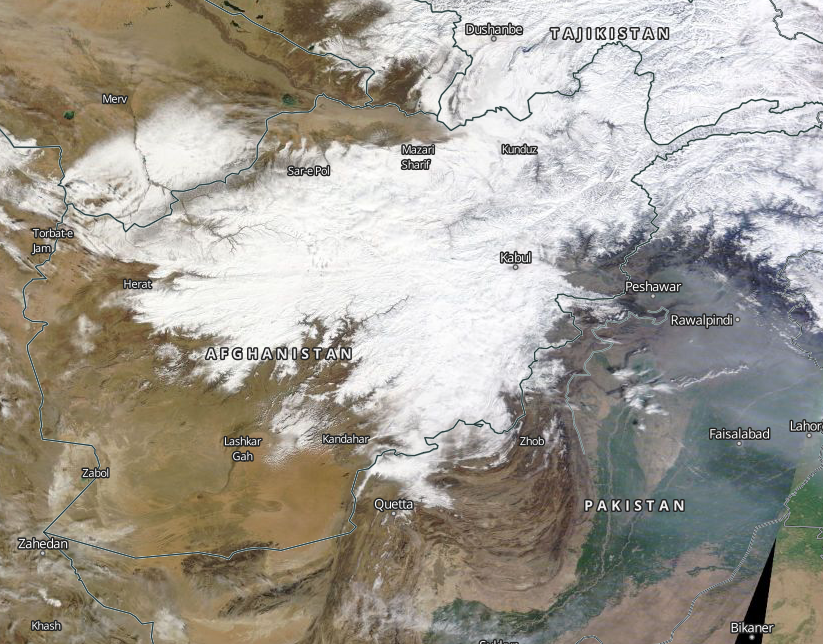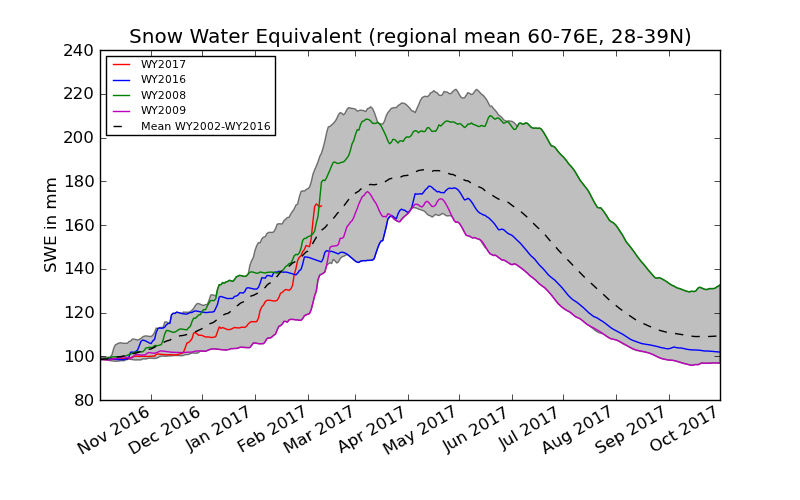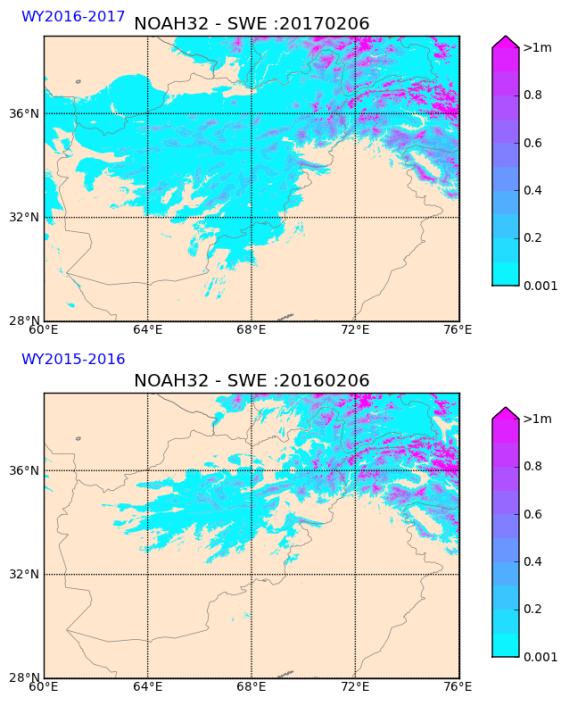The NASA LIS group supports the Famine Early Warning Systems Network (FEWS NET) sponsored by USAID by providing daily land-surface model (LSM) simulations for Central Asia and Africa. FEWS NET is designed to provide evidence-based analysis to be used in decision making in humanitarian crises. The LSM simulated snow water equivalent (SWE) and snowfall in Central Asia shows that for months October to December 2016, the SWE was less than normal (or climatological mean). However, after January 20, 2017, heavy snowfall caused SWE to increase by a large amount in the past three weeks. The spatial distribution shows that this snowfall was widespread, compared to last year. This resulted in fatal avalanches and is expected to result in severe flooding later in the season. According to news reports, over 100 people have lost their lives in mountainous regions of Afghanistan and neighboring Pakistan in early February after the largest snow in the last 10 years covered much of the region. Most fatalities were a result of avalanches and dozens of people are still missing.
These LSM simulations will supplement decision makers to target affected areas much more efficiently.

Image credit: NASA Worldview http://go.nasa.gov/2lwgNec Feb 6, 2017

Fig. 1 depicts the regional average snow water equivalent simulated by LIS using the Noah-3.2 LSM. The climatology from 2002-2016 (black dashed line) along with this winter's SWE (WY2017, red line), last winter's (blue line), and WY2008 (green) & WY2009 (pink), which were La Niña years. Similarity between WY2017 with WY2008 can be used to predict the runoff and possibly related flood conditions using NASA LIS modeling capabilities.

Fig. 2 shows the spatial pattern of snow water equivalent for the Afghanistan region for Feb 6, 2017 (top) compared to last year, Feb 6, 2016 (bottom), using the Noah-3.2 LSM in LIS. Note the much wider snow cover extent in 2017 as well.
Daily updates are available at: https://lis.gsfc.nasa.gov/projects/fewsnet-central-asia.
The FLDAS is a custom instance of the NASA Land Information System that has been adapted to work with domains, data streams, and monitoring and forecast requirements associated with food security assessment in data-sparse, developing country settings. FLDAS is funded by NASA ROSES & USAID.

